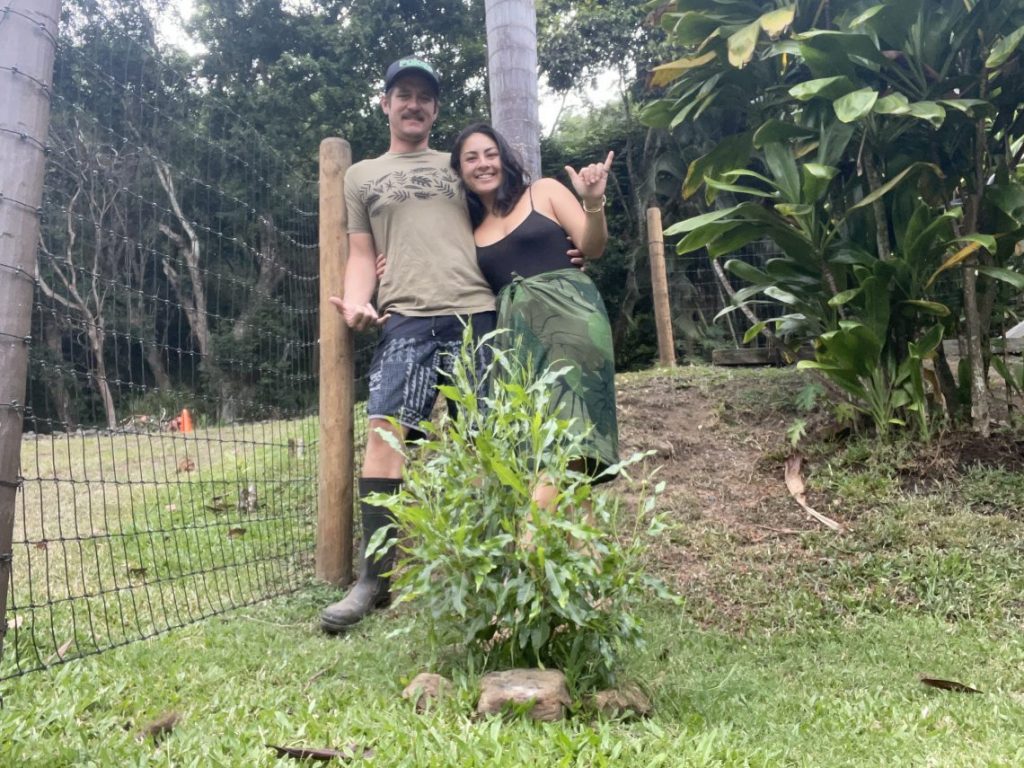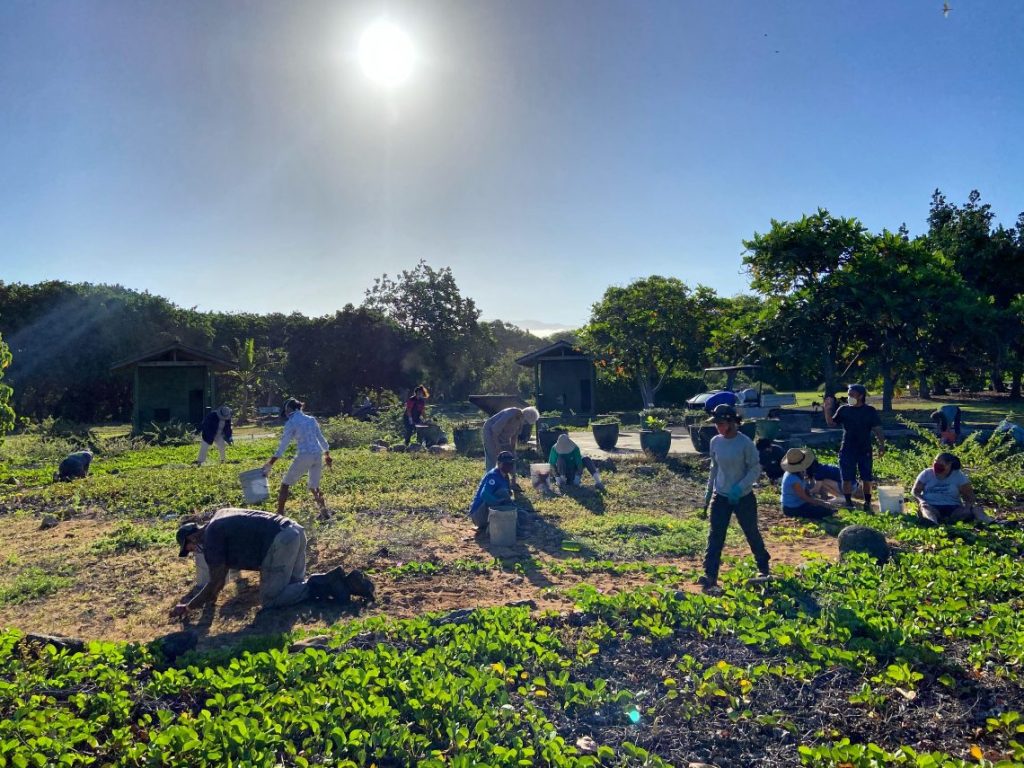Lindsay and Kely Rodrigues clear out overgrown weeds on their family land in Waiheʻe Valley with the intention of growing native species once found in their area. For them, planting native goes deeper than just putting a plant in the soil. “I feel proud to live in Hawaiʻi, to be Hawaiian, and to plant native plants.” Lindsay explains. “Planting native is like a time capsule and helps me understand the connection between ourselves, my nāʻau, my kūpuna, and this ʻāina. Being in Hawaiʻi and being Hawaiian, it just makes sense to do this.”
“Planting native is like a time capsule and helps me understand the connection between ourselves, my nāʻau, my kūpuna, and this ʻāina. Being in Hawaiʻi and being Hawaiian, it just makes sense to do this.”
Hawaiʻi is home to some of the most unique plant species in the world. Continental plant species arrived to the islands without the aid of humans. They arrived via one of the three M’s- makani (wind), moana (ocean), and manu (birds). Seeds would blow over in air currents, plants or seeds would float to our shores, and hitchhiking seeds would cling to bird’s feathers- or in their digestive tracts. Millions of years of evolution resulted in new species of plants found nowhere else in the world, with plants adapting to every ecological niche in our islands. These ecosystems contribute to water collection and recharge of freshwater aquifers, provide habitat for native birds and insects, and are interwoven into the foundation and practice of Hawaiian culture.

After human arrival, native plant communities quickly declined. Alteration of landscapes, the arrival of hoofed grazing animals, and invasive plant introductions all contributed. Today, Hawaiʻi has gained the unfortunate moniker of being the extinction capital of the world. After millions of years of evolution, Hawaiʻi lost over 100 species in only a few hundred years. Seventy-five percent of the landscape is now non-native introductions. If you look outside of your window right now, chances are that none of the plants you see are originally from Hawaii.
This is changing though. With increasing awareness of how important native plants are to Hawaiʻi, residents are taking up their shovels to incorporate more native species into our modern landscapes. Tamara Sherrill, Executive Director of the Maui Nui Botanical Gardens, is helping them. “Residential areas are some of the most important places to plant native. Ninety percent of our native plants are only found in Hawaiʻi, so planting a landscape that looks like no other place in the world not only helps the environment but shows our pride in what makes Hawaiʻi special.” Sherril explains. “Native plants have hundreds of Hawaiian cultural uses and growing them helps save them from overharvesting in forests. They require less water (saving on your water bill) and can also supply your home for lei making, traditional medicine and tea, and as a source of craft materials. Depending on where you live, they can also provide food and habitat for native birds and insects.”

April is Native Hawaiian Plant Month and a great time to start planting! Incorporating native plants into your yard doesn’t need to feel daunting. Sherill offers advice on getting started, “Before choosing your plants, find out your average rainfall and elevation. Learn your general soil type by calling the Maui Master Gardeners or by taking a sample to the UH Maui Cooperative Extension Office.” She adds, “Some native plants tolerate a wide range of environments, but most only do well in the zones that they evolved in. For sea level and other warm areas of Maui, come take a look at what is growing at Maui Nui Botanical Gardens.” If you live upcountry or in wetter areas, Garden staff can help you find plants in the nursery that would be best suited for your area.
The Maui Nui Botanical Gardens also host weekly native plant sales and giveaways, monthly workshops, workdays every Wednesday, and more. Visit and follow the Maui Nui Botanical Gardens to learn more (Instagram: @mauinuibg, website: mauinuibg.org).
Back in Waiheʻe, the Rodrigues’ are planning their next phase of planting and Lindsay explains her motivations, “I plant because I’m scared about losing our diversity of native plants. I want our next generation to experience what a truly Hawaiian landscape looks like. Planting native makes me think about the future and how one day this small plant will become a tree that my grandchildren will be sitting under. I plant Hawaiian plants for the connection and the future- for our ʻāina, and for our keiki.”
Serena Fukushima is the public relations and education specialist for the Maui Invasive Species Committee. She holds a bachelor’s degree in environmental studies and a graduate degree in education from the University of Hawaii at Manoa. “Kia’i Moku, Guarding the Island” is written by the Maui Invasive Species Committee to provide information on protecting the island from invasive plants and animals that threaten our islands’ environment, economy and quality of life.
This article was originally published in the Maui News on April 9, 2022 as part of the Kia‘i Moku Column from the Maui Invasive Species Committee.
Read more Kiaʻi Moku articles


